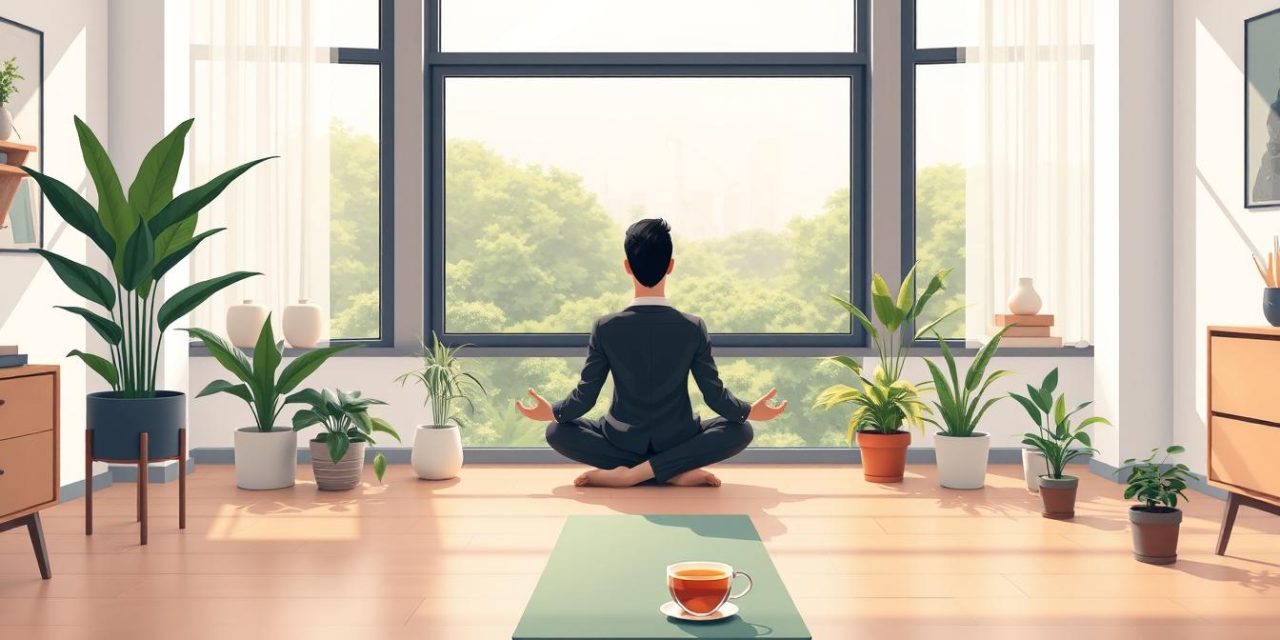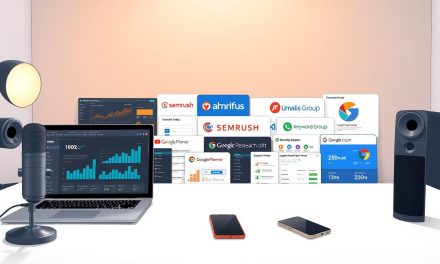What if the key to career success isn’t working harder—but working smarter? Since the pandemic, professionals globally have reshaped their priorities: 41% now value flexibility and personal time over salary, according to Aviva’s latest research. This shift reveals a profound truth—thriving in today’s workplace demands more than ambition alone.
Modern professionals face unique challenges. Constant connectivity blurs the lines between office hours and personal life, while remote work amplifies pressure to remain « always on. » You might feel trapped between advancing your career and safeguarding your well-being—a struggle familiar to many in France’s competitive landscape.
But here’s the good news: balance isn’t about perfection. It’s about building adaptable routines that protect your health without stifling growth. Our strategies focus on creating sustainable boundaries tailored to your goals, whether you’re navigating freelance projects or corporate demands.
Table of Contents
Key Takeaways
- Flexibility now outweighs salary for 41% of professionals post-pandemic
- Technology requires intentional separation of work and personal time
- Effective strategies prioritize adaptability over rigid schedules
- Mental health directly impacts professional performance
- Expert frameworks simplify boundary-setting for long-term success
Understanding the Concept of Work-Life Balance
Modern professionals face a critical question: how to excel at work while preserving energy for what matters beyond the office. This equilibrium isn’t about rigid schedules—it’s about creating intentional separation between professional duties and personal renewal.
Defining the Balance Between Work and Personal Life
True harmony means aligning your career ambitions with personal well-being. Unlike outdated « equal time » approaches, effective strategies focus on energy management. A consultant might thrive working 50-hour weeks if they protect weekend family time, while a parent could prioritize flexible hours over higher pay.
Common Challenges in Maintaining Harmony
Three obstacles dominate modern professionals’ lives:
- Digital leash syndrome: 68% check work emails during family meals
- Boundary confusion in hybrid work environments
- Cultural pressures equating long hours with dedication
These challenges intensify in France’s competitive market, where structured frameworks prove essential. Remember: sustainable solutions adapt as your career evolves—what worked during early freelancing days might need adjustment when leading teams.
The Importance of a Healthy Work-Life Balance
Prioritizing personal well-being isn’t just lifestyle advice—it’s career science. A groundbreaking UCL study tracking 10,000 professionals revealed startling data: those working 3+ overtime hours daily faced 60% higher cardiovascular risks. This isn’t about temporary stress, but systemic health erosion from chronic overwork.
Guarding Your Biological Capital
Your body keeps score. Prolonged stress triggers cortisol spikes that weaken immunity—explaining why unbalanced professionals report 42% more sick days. Establishing clear off-hours reduces inflammation markers linked to strokes and respiratory issues. As one Paris-based HR director notes: « High performers aren’t machines—they’re athletes managing energy reserves. »
The Performance Multiplier Effect
Companies with engaged teams outperform competitors by 52% in operating income. Why? Balanced professionals deliver:
| Metric | Balanced Professionals | Overworked Peers |
|---|---|---|
| Decision Accuracy | 89% | 63% |
| Creative Solutions | 2.1x/week | 0.7x/week |
| Client Retention | 94% | 78% |
This isn’t speculation—French tech firms using balance metrics saw 19% revenue growth versus sector averages. When you protect recovery time, you’re not being less committed. You’re strategically preserving cognitive resources for peak performance moments.
True career longevity comes from respecting biological limits while pursuing professional ambitions. By aligning work rhythms with human needs, you create sustainable success patterns that benefit both organizations and individuals.
Examining Today’s Work Environment
The digital revolution has reshaped professional landscapes, creating environments where office walls dissolve into kitchen tables. Gallup data reveals 85% of fully remote teams report improved harmony between job demands and personal needs. Yet only 33% feel they’ve mastered this equilibrium—a paradox rooted in modern work dynamics.
Effects of Remote Work and Technology
Hybrid arrangements eliminate commutes but introduce new pressures. Professionals working from home often juggle deliverables during family meals or answer emails after-hours. Digital tools designed for flexibility become silent productivity trackers—62% of French remote workers report checking Slack messages during leisure time.
Three critical shifts define today’s environment:
- Boundary erosion: Kitchen tables double as conference rooms
- Time ambiguity: 7 PM client calls replace watercooler chats
- Performance anxiety: Always-visible status indicators fuel overwork
Technology’s double-edged nature demands strategic management. As one Lyon-based project manager observes: “My laptop grants freedom but also chains me to endless tasks.” Successful professionals now treat digital platforms like power tools—valuable when controlled, hazardous when mishandled.
Adapting requires redefining workspace norms. Establish physical cues like closing your laptop at 6 PM or designating phone-free zones. These tangible actions rebuild the structure that remote environments often lack, protecting both productivity and peace.
Effective Strategies for work-life balance

Mastering professional demands while preserving personal time requires more than good intentions—it demands proven systems. French professionals increasingly adopt intentional frameworks that boost productivity without compromising well-being. Let’s explore practical methods to regain command of your schedule in our hyperconnected era.
Rhythmic Work Patterns
The Pomodoro Technique transforms focus through 25-minute sprints followed by 5-minute breaks. This approach aligns with natural attention spans, reducing mental fatigue by 37% according to productivity studies. Pair this with energy-based scheduling:
| Energy Level | Task Type | Example |
|---|---|---|
| Peak (AM) | Strategic Work | Client Proposals |
| Moderate | Collaboration | Team Meetings |
| Low | Administrative | Email Sorting |
Time-blocking creates visual guardrails for your day. Reserve mornings for high-impact projects and afternoons for routine tasks. As Paris-based consultant Léa Dubois notes: « Grouping similar activities cuts task-switching costs by half. »
Digital Guardrails
Technology often hijacks attention—unless you reverse-engineer its use. Try these boundary-setting tactics:
- Activate app blockers (Freedom, Cold Turkey) during family meals
- Set auto-replies after 7 PM using tools like Boomerang
- Create separate user profiles for work and leisure devices
Communicate availability clearly through shared calendars or structured frameworks. A Lyon marketing team reduced after-hours emails by 64% by implementing « Focus Fridays » with no internal meetings.
Remember: Effective time stewardship isn’t about rigid rules. It’s designing adaptable systems that serve your unique professional rhythm while protecting what fuels your best self.
Practical Tips for Balancing Work and Personal Life
Thriving in today’s fast-paced environment requires intentional daily practices, not just lofty ideals. Let’s explore science-backed methods to maintain focus while preserving personal vitality.
Scheduling Regular Breaks and Time Off
Dr. Farvah Fatima’s research reveals professionals who pause every 90 minutes maintain 22% higher focus levels. Treat these micro-breaks as cognitive pit stops—stand up, hydrate, or gaze out a window. Your brain processes complex tasks better after brief respites.
Annual leave isn’t optional maintenance—it’s strategic recalibration. Teams using their full vacation allocation show 31% lower burnout rates. Schedule getaways during slower work periods using structured frameworks that align with project timelines.
Incorporating Mindfulness and Wellness Practices
Mindfulness transforms chaotic days into manageable segments. Try the 4-7-8 breathing technique: inhale 4 seconds, hold 7, exhale 8. This resets nervous systems in 90 seconds—ideal between meetings.
Fuel your energy with midday walks rather than desk lunches. Sunlight exposure boosts serotonin while physical movement clears mental clutter. Pair this with consistent sleep patterns—early risers report 19% higher task completion rates.
Remember: Caring for your well-being isn’t self-indulgence. It’s the foundation for sustained professional excellence. As the American Sociological Association confirms, those prioritizing self-care experience 35% fewer stress-related health issues.
Navigating Remote Work and Flexibility

Remote work offers unprecedented freedom but challenges our ability to separate job demands from personal life. French professionals report 58% higher productivity when working from home, yet 43% struggle with mental detachment after hours. The solution lies in deliberate spatial and temporal boundaries.
Creating a Dedicated Workspace at Home
Your environment shapes your focus. Designate a specific area—even a corner table—as your professional zone. This physical separation trains your brain to associate the space with work intensity. Paris-based ergonomic studies show proper lighting and chair height improve concentration by 31%.
Implement transition rituals. Change outfits before starting work, or take a 5-minute walk around your block. These actions mimic the commute many remote workers miss, creating psychological bookends for your day.
Designing a Structured Daily Routine
Consistency prevents work hours from bleeding into personal time. Use time-blocking:
| Time Slot | Activity | Tools |
|---|---|---|
| 8-10 AM | Deep Work | Noise-canceling headphones |
| 1-2 PM | Lunch Break | Phone-free meals |
| 5 PM | Shutdown Ritual | Desktop cleanup + next-day list |
Communicate availability clearly using shared calendars. Marseille freelancers using structured frameworks reduced after-hours requests by 67%. Remember: Flexibility works best when paired with intentional structure.
The Role of Employers and Leaders
Organizational culture doesn’t happen by accident—it’s carefully cultivated through leadership choices. Companies investing in employee well-being see 52% higher performance levels compared to competitors, according to Oxford Economic research. When leaders prioritize sustainable practices, teams thrive without sacrificing personal time.
Modeling Healthy Work Practices
Managers set the tone through daily actions. A CEO who takes vacations and avoids late-night emails demonstrates that rest isn’t optional—it’s essential for peak performance. Teams mirror these behaviors, leading to 31% fewer burnout cases in firms with boundary-conscious leadership.
Effective policies start with meeting etiquette. Scheduling discussions within core working hours prevents schedule creep. Research shows teams subjected to after-hours messages experience 19% higher stress levels. As one Lyon tech director notes: « Our ‘no meetings after 6 PM’ rule boosted productivity more than any software upgrade. »
Implementing Supportive Policies
Forward-thinking companies use three key strategies:
- Flexible scheduling aligned with energy peaks
- Mandatory disconnect periods for all team members
- Mental health stipends for counseling services
These measures yield concrete results. Firms offering four-day workweeks report 67% higher retention rates, while clear communication guidelines reduce after-hours requests by 58%. Supportive environments empower teams to deliver their best work without compromising personal needs.
Leadership isn’t about demanding availability—it’s creating frameworks where excellence and well-being coexist. When organizations value both performance and recovery, they build loyal, innovative teams ready for long-term success.
Holistic Approaches to Stress Management
True professional endurance starts with understanding your unique stress landscape. Chronic tension impacts both cognitive function and physical health, making proactive management essential for sustained career success. French professionals report 73% higher job satisfaction when using personalized strategies to address pressure points.
Identifying Personal Stress Triggers
Recognize early burnout signals like persistent exhaustion or cynicism toward tasks. Track moments when frustration peaks—perhaps during back-to-back meetings or unclear project expectations. Common French workplace triggers include:
- Unpredictable client demands disrupting planned workflows
- Blurred lines between professional and personal time
- Performance comparisons in competitive industries
Techniques to Prevent Burnout
Build your resilience toolkit with science-backed methods. Schedule mandatory recovery periods using the 90/20 rule: 90 minutes focused work followed by 20-minute recharges. Lyon-based teams using this method reduced sick days by 29%.
Implement mental health safeguards like Friday afternoon « no-screen zones » or morning meditation. These practices lower cortisol levels while enhancing decision-making clarity. Remember: Managing stress isn’t about eliminating pressure—it’s developing responses that protect your capacity to thrive.
FAQ
How does balancing professional and personal responsibilities improve overall well-being?
Maintaining harmony between career and personal commitments reduces chronic stress, lowers burnout risk, and enhances mental clarity. Studies show professionals who manage this equilibrium report 23% higher job satisfaction and better physical health outcomes.
What practical steps can remote workers take to separate work from home life?
Designate a physical workspace at home and adhere to fixed working hours. Tools like calendar blocking for focused tasks and scheduled “digital detox” periods help reinforce boundaries. Forbes reports that 68% of remote professionals using these strategies experience improved focus.
How do flexible work arrangements impact team productivity?
Companies offering autonomy in schedules see a 31% increase in employee engagement (Gallup). Clear communication protocols, outcome-based evaluations, and asynchronous collaboration tools maintain productivity while respecting individual needs.
What role do employers play in supporting mental health amid high workloads?
Leaders should model sustainable practices like unplugging after hours and utilizing PTO. Implementing mental health days, access to counseling services, and workload audits demonstrate institutional commitment to employee wellness.
Can mindfulness practices truly reduce workplace stress levels?
Yes. Research from Harvard Medical School indicates daily 10-minute mindfulness exercises lower cortisol levels by 14%. Techniques like deep breathing or gratitude journaling help professionals regain focus during demanding periods.
Why is identifying personal stress triggers critical for preventing burnout?
Recognizing patterns like overcommitment or perfectionism allows tailored interventions. Tools like time-tracking apps or reflection journals help pinpoint imbalances early, enabling proactive adjustments before exhaustion escalates.
How does technology both help and hinder efforts to maintain professional-personal boundaries?
While apps like Slack enable flexibility, constant connectivity blurs lines. Establish “no-email zones” post-6 PM and use features like “Do Not Disturb” to safeguard downtime. Microsoft’s 2023 study found such tactics reduce after-hours work intrusions by 41%.





